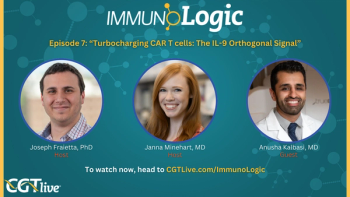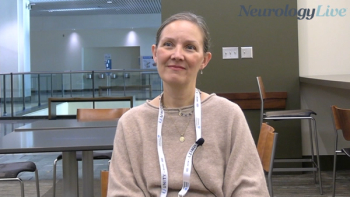
Cell Therapy Modulates Tumor Microenvironment in Glioblastoma
The cell therapy was tolerated although there was a SUSAR of GGT elevations.
A gene-edited autologous cell therapy, Temferon, is well-tolerated in participants with unmethylated MGMT glioblastoma (GBM) with a promising ability to modulate the tumor microenvironment (TME).
Bernhard Gentner, MD, PhD, group leader, Translational stem cell and leukemia unit, and staff hematologist, San Raffaele Telethon Institute for Gene Therapy, presented findings from a phase 1/2a study (NCT03866109) at the
“We developed a genetically modified cell-based autologous hematopoietic stem cell platform designed to selectively deliver immunostimulatory cytokines into the TME through Tie-2 expressing monocytes. As a consequence, many tumor-associated macrophages, that are well recognized to foster cancer progression, are reprogrammed toward an immune-stimulating and tumor-suppressive phenotype,” Gentner and colleagues wrote.
Temferon is transduced with a lentiviral vector and expresses interferon-alpha2 to the TME of participants with an unmethylated MGMT promoter. As of January 2022, 15 participants with this disease have received doses of Temferon ranging from 0.5 x106 cells/kg to 2.0x106 cells/kg in 5 cohorts. Investigators observed rapid engraftment and fast recovery from the non-myeloablative conditioning.
WATCH NOW:
No dose-limiting toxicities have been observed and median overall survival was 14 months after surgery with a maximum follow-up of 27 months. Serious adverse events (AEs) did occur, but these were mostly attributed to conditioning chemotherapy or disease progression. Persistent Gamma-Glutamyl Transferase elevation occurred in 1 participant and was classified as a suspected unexpected serious adverse reaction.
Four of the 15 participants have undergone a second surgery and these tumors were analyzed for the presence of bone-marrow (BM) derived transduced cells as well as any immunological changes. Analyzed specimens from 3 of 4 patients demonstratedsignificant homing of transduced cells from BM to tumor site.
Vector copy number analysis revealed Temferon-derived differentiated cells in BM and peripheral blood made up to 30% of these cells at their peak and persisted up to 18 months. Single cells RNA sequencing of the TME in treated participants compared to recurrent tumors in control patients had a clear Temferon signature.
“We believe that our interim results provide initial evidence of Temferon's potential to modulate the TME, as predicted by preclinical studies, which will be confirmed with longer follow up in the higher dose cohorts,” Gentner and colleagues wrote.
To read more coverage of ASGCT 2022,
REFERENCE
Gentner B, Eoli M, Capotondo A, et al. Autologous cell & gene therapy for the therapeutic targeting of immune payloads to the solid tumor microenvironment: Preliminary results of the TEM-GBM study. Presented at ASGCT 2022, May 16-19, Washington DC. Abstract #1190.
Newsletter
Stay at the forefront of cutting-edge science with CGT—your direct line to expert insights, breakthrough data, and real-time coverage of the latest advancements in cell and gene therapy.











































